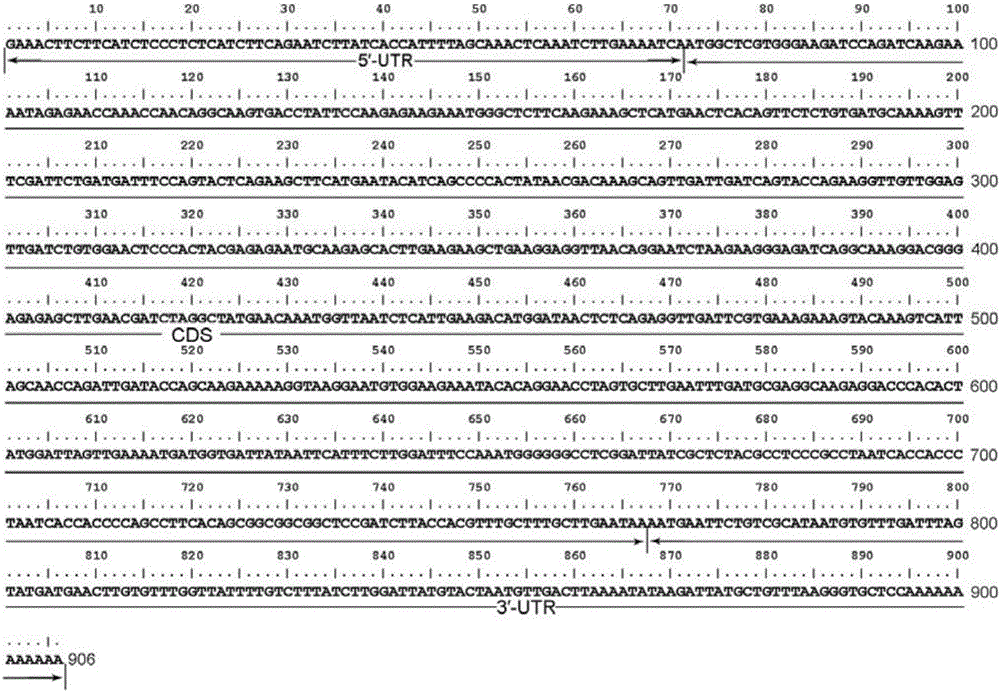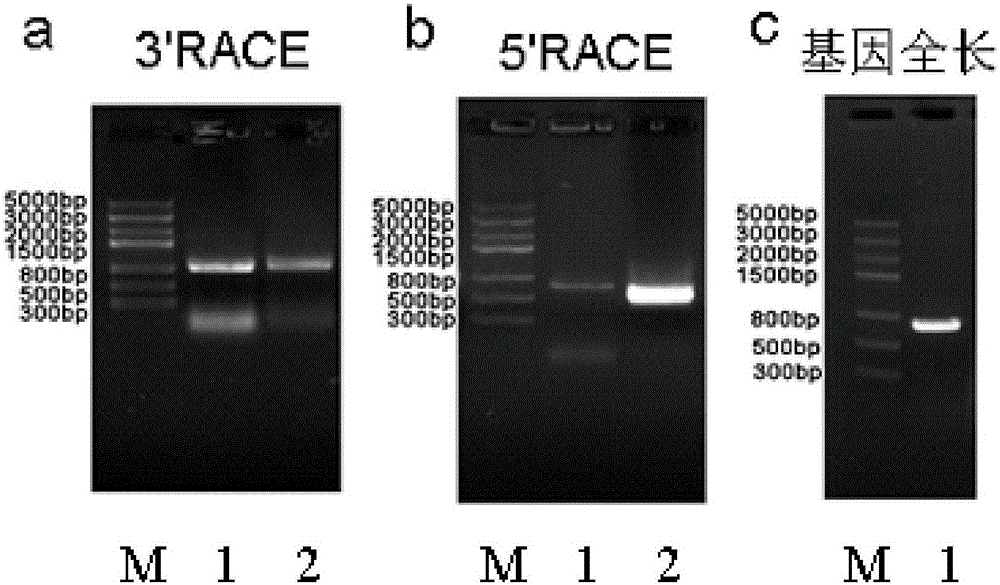Catalpa bungei CabuAP3 protein as well as encoding gene and application thereof
A technology that encodes genes and proteins, applied in the field of molecular biology, can solve problems such as poor sequence homology, highly unconserved sequences, and difficulty in obtaining AP3 homologous genes, and achieve good application prospects
- Summary
- Abstract
- Description
- Claims
- Application Information
AI Technical Summary
Benefits of technology
Problems solved by technology
Method used
Image
Examples
Embodiment 1
[0030] The cloning of embodiment 1 a Chinese catalpa CabuAP3 gene cDNA sequence
[0031] 1. Extraction of totalRNA from flower buds of Chinese catalpa
[0032] Fresh flower buds with a length of about 5 mm were collected from Catalpa, put into cryopreservation tubes, immediately put into liquid nitrogen for quick freezing for 3 hours, and then put into -80°C ultra-low temperature freezer for later use. Use the RNA extraction kit to extract the total RNA of Chinese catalpa flower buds: take out the material of Chinese catalpa flower buds from the -80°C ultra-low temperature freezer, put them into a mortar with 2mL RLT lysate and 100μL PLANTaid, and grind them fully at room temperature; Transfer to a 2mL eppendorf tube, centrifuge at 13000rpm for 10min, absorb 500μL supernatant, and transfer to a new 2mL centrifuge tube; add 250μL absolute alcohol to the supernatant, blow and mix well; transfer the above liquid to an adsorption column, and Put the adsorption column into the col...
Embodiment 2
[0041] Example 2 The protein sequence encoded by a Chinese catalpa CabuAP3 gene
[0042] Using the primer5 software, the full-length cDNA sequence of the Catalpa CabuAP3 gene was translated into a protein sequence (SEQ ID No.1), and according to the characteristics of the MADS-box gene, the CabuAP3 protein sequence of the Catalpa tree was translated into the M region, I region, K region, and C region And the division of the 2 motifs PI-derived motif and euAP3 motif contained in the C region ( figure 2 ).
Embodiment 3
[0043] The expression pattern analysis of embodiment 3 Chinese catalpa CabuAP3 gene
[0044] According to the full-length cDNA sequence of Catalpa cabuAP3 gene, oligo6.0 software was used to design primers RTAP3F:5'-TACATCAGCCCCACTATAACGA-3' and RTAP3F:5'-TTATTCAAGCAAAGCAAACGTG-3' for semi-quantitative experiments. Use PCR to detect its specificity, and it can only be used under the premise of ensuring PCR specific amplification. The catalpa actin gene was used as the positive control of the semi-quantitative test, and the primers of the actin gene were CabuactinF: 5'-TCACACTGGTGTGATGGTTG-3' and CabuactinR: 5'-AGTTCTTCTCCACAGCAGAG-3'. The detection band brightness was adjusted by the proportion of the first-strand cDNA template amount in young leaves, sepals, petals, stamens and pistils. Semi-quantitative PCR reaction program: 94°C for 4min; 94°C for 30s, 57°C for 30s, 72°C for 30s, 25 cycles; 72°C for 10min. After the reaction, electrophoresis detection was carried out with...
PUM
 Login to View More
Login to View More Abstract
Description
Claims
Application Information
 Login to View More
Login to View More - R&D
- Intellectual Property
- Life Sciences
- Materials
- Tech Scout
- Unparalleled Data Quality
- Higher Quality Content
- 60% Fewer Hallucinations
Browse by: Latest US Patents, China's latest patents, Technical Efficacy Thesaurus, Application Domain, Technology Topic, Popular Technical Reports.
© 2025 PatSnap. All rights reserved.Legal|Privacy policy|Modern Slavery Act Transparency Statement|Sitemap|About US| Contact US: help@patsnap.com



